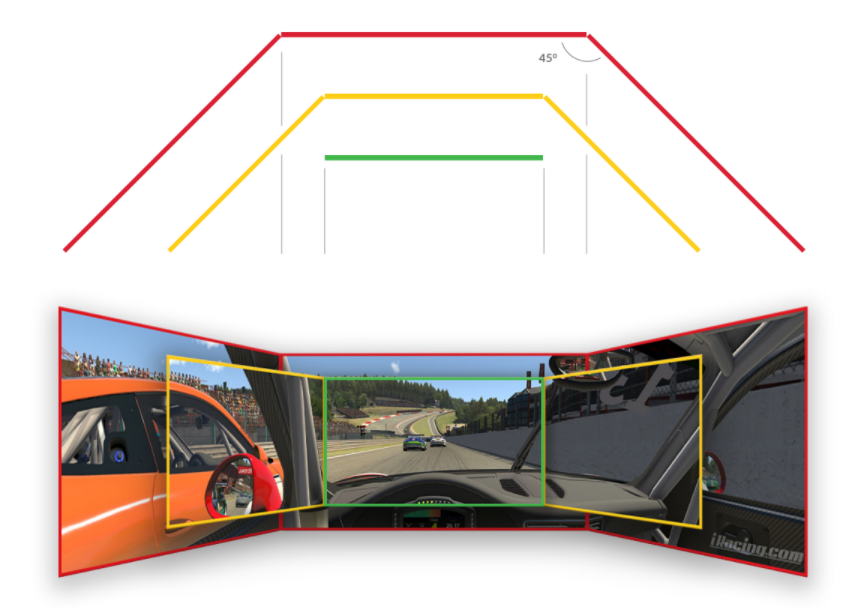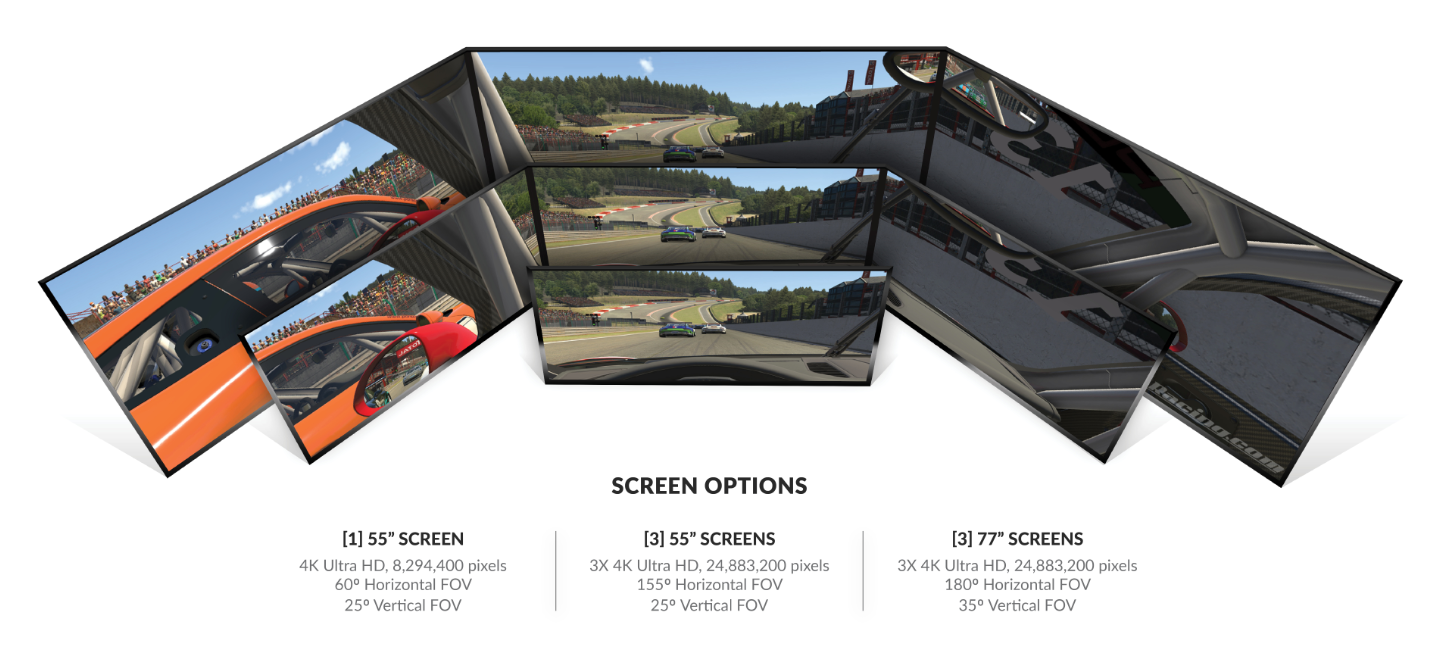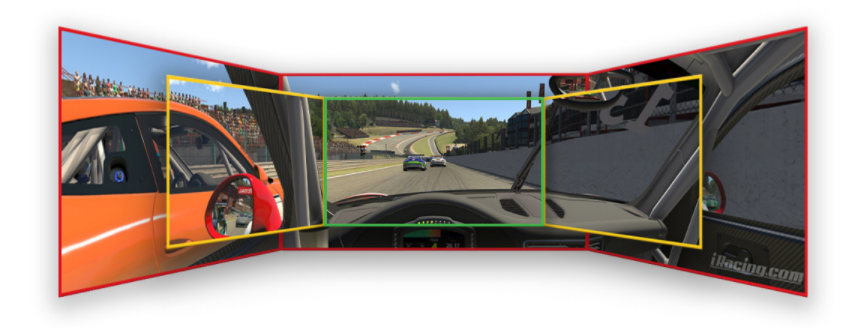A driver’s vision is critical to driving and racing. Having a clear field of view impacts every aspect of extracting the most out of a car and maximizing lap times. And so, it becomes vitally important in racing simulation as well.
Field of View (or Field of Vision) is how much of the world you can see at any given moment. Getting the Field of View correct is essential for accurate racing simulation, especially for experienced drivers. If what you see is not what your hands, feet or inner ear perceive is happening, you will be notice immediately and the simulation experience won’t be realistic – the sensation of immersion will be broken. So, it is vital to make all the details of the Field of View correct and one of the reasons that the engineers at CXC Simulations work to get the visual details correct.
First, there are limitations based on the number of screens and the size of the screens. A simulator that uses a single screen will have an artificially narrow Field of View and the driver will not have peripheral vision available to them.
Triple screen systems that wrap around the driver are a huge benefit, increasing the immersion that a driver has when driving a racing simulator by providing 180 degrees field-of-view. Increasing the field of view to that size also creates a much more realistic scale. What this means is a driver will now have to turn their head into a corner, will be able to ‘sense’ cars alongside, will be able to pick up braking points and, in many cases, makes the rear-view mirrors usable in simulation.

It is a huge jump in realism to go from a single screen to a triple-screen system. Even a curved single-screen gaming monitor won’t provide the same level of realism as a triple-screen system. Nearly every Motion Pro II simulator is ordered with the Panoramic Display System, which features three 55” or three 77” High-Definition OLED displays. OLED displays that provide a 172-degree viewing angle.
Many simulators are available with smaller screens, and often people build their personal simulators with smaller screens – often for reasons of space or cost savings. When using smaller screens, a common solution is to bring the screens as close to the driver as possible, which enables the side screens to be positioned alongside the driver. Where this falls short, however, is sitting that close to a screen will introduce a lot of eyestrain on the driver which will break the immersion.
Utilizing 55” or 77” screens allows the driver to maintain enough physical distance from the screens to eliminate eyestrain while still taking advantage of the wraparound effect of the triple screens. For the same reason you wouldn’t want to sit too close to your computer or television screen, a driver needs the right amount of distance from the screens in a racing simulator.
In addition to utilizing a large screen size, CXC Simulations has a very specific set of parameters it uses for establishing the Field of View because it is so critical to accurate racing simulation. The Field of View is set to make sure that of the objects are scaled correctly to the driver’s eye point. If objects appear too small, or too large, the driver’s sense of speed will be thrown off which will also break the immersion. Getting the Field of View correctly ensures that the driver’s experience perfectly matches what the driver feels through the motion system, force feedback steering wheel and hydraulic brakes.

The integration of Virtual Reality headsets into the Motion Pro II is the final step to creating an immersive experience. Virtual Reality eliminates any limitation provided by screens, and vastly increases the feeling of presence for the driver. A driver can have a theoretical 360-degree field of view and is also placed inside of the race car with an accurate representation of the interior of their cockpit. What the driver doesn’t notice is the borders of the screens – it is the detail of the windshield, dashboard, and steering wheel in front of their virtual hands.
Field of View is one of the details that can make or break a racing simulation experience. Schedule your test drive today to experience a Motion Pro II with the Panoramic Display System or Virtual Reality.

